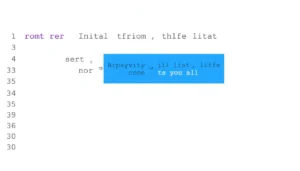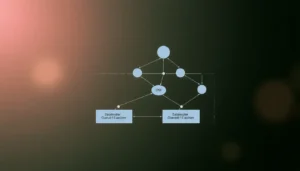Alaska Summit 2025: Unpacking the Trump-Putin Talks in Anchorage
- THE MAG POST

- Sep 5
- 4 min read

Alaska summit 2025 set the stage for a rare, high-stakes dialogue between rival powers in a remote American outpost, turning Anchorage into a focal point of global diplomacy. Observers watch how tone, posture, and language translate into cautious steps toward de-escalation.
This introduction surveys how the Alaska meeting reframes bilateral engagement, the risk calculus for leadership decisions, and the questions scholars will weigh as transcripts and impressions circulate in capitals worldwide. Beyond optics, policy options—from arms dialogue to economic signaling—will be judged by credibility, not headlines, as negotiators calibrate signals that could shift regional power dynamics.
Anchorage Rendezvous: High-Stakes Diplomacy in the North
Anchorage's quiet airstrip became a stage for a cascade of strategic signals, where two long-time adversaries confronted questions that go beyond personal optics. The setting matters as much as the rhetoric, shaping perceptions in capitals around the world. Observers watch how tone, posture, and language translate into cautious steps toward de-escalation.
Why now? Strategic timing and signaling
The Alaska summit 2025 arrived at a moment when both leaders face domestic pressures and shifting regional alignments, making the exchange as much a political message as a policy negotiation. Observers scrutinize gestures, venue, and cadence as proxies for intent. The timing magnifies the potential for calibrated concessions or hard lines.
From a messaging standpoint, a staged handshake, a shared limousine, and a formal platform are not mere theatrics but signals about readiness to engage, pause, or pivot. The chosen setting—remote Alaska—adds texture to risk assessment and leverage calculations, underscoring how symbolism intertwines with strategy.
Historical context and precedent
Historical diplomacy between Washington and Moscow includes episodes of confrontation and tentative détente. This meeting echoes past milestones while adapting to a rapid, information-saturated world where media cycles and cyber-enabled diplomacy shape perceptions as much as ink on a page. The arc informs expectations for realism and restraint.
Previous face-to-face encounters established templates—bilateral talks, delegation shifts, and staged briefings—that this summit tests anew in a complex global landscape. Even without a sweeping accord, patterns of coordination on red lines or clarifications can reduce misperception and miscalculation in volatile theaters.
Shifts in delegation and format
From the outset, the Anchorage talks hint at a broader, more inclusive approach to diplomacy, where multiple voices operate across tracks. This framing invites a richer exchange of perspectives while maintaining a core focus on core security issues and the sequencing of potential steps forward.
From one-on-one to triad: a tactical adjustment
Shifting from bilateral to triad-style discussions expands the information set and risk tolerance for both sides. In Anchorage, the presence of extra diplomats may facilitate more nuanced exchanges, parallel tracks, and safer channels for sensitive topics that would stall in a pure one-on-one format. The endgame remains measurable progress rather than grand promises.
Triad formats also press negotiators to demonstrate inclusivity and narrative control. Yet the dynamic risks diluting focus if procedural parity overshadows substantive concessions, demanding disciplined leadership to translate talk into tangible signals for allies and rivals alike.
Roles and optics of the emissaries
Emissaries carry much of the weight in translating high-level intent into policy options. The mix of senior diplomats and special envoys shapes what is publicly visible and what remains in the gray zone, influencing credibility and trust-building across the alliance networks. Their expertise can widen or narrow the room for compromise.
Optics matter: body language, stagecraft, and formal statements contribute to perceived seriousness. For observers, alignment between official rhetoric and private signals often reveals more about red lines and sensitivities than public speeches alone.
Geopolitical reverberations across security and economics
Beyond the theater, the talks touch core questions about how great powers manage risk, signals, and leverage. The discussions may influence deterrence postures, crisis management protocols, and the tempo of diplomatic engagement across multiple domains, from defense to trade.
Arms control, cyber norms, and regional signaling
Technologies and doctrines discussed in such meetings touch arms control, cyber norms, and risk management. Even without sweeping accords, tacit understandings about restraint, verification, or hotlines can reduce inadvertent escalation, particularly in polarized theaters like Europe and the Arctic.
Similarly, the exchange carries consequences for allied signaling—whether partners see an opening for cooperation or a warning about renewed competition. The North Pacific becomes a lens through which the global balance of power is read, with implications for treaty politics, sanctions regimes, and investment calculus.
Energy politics, sanctions, and stability in the North Pacific
Energy dynamics and sanctions postures influence strategic calculations. The meeting may drift toward discussions about energy collaboration, sanctions timing, and their ripple effects on energy markets, trade routes, and regional resilience, even as short-term shifts remain uncertain.
Stability in the North Pacific hinges on credible signaling and predictable behavior. The participants’ willingness to maintain open channels could deter miscalculations, reassure partners, and create space for economic projects that underpin regional growth and shared security.
Key Takeaways
In this Alaska summit 2025 moment, diplomacy blends spectacle with calibrated strategy, offering a framework for future engagement rather than an immediate breakthrough. The talks underscore the enduring value of regular dialogue, even as red lines and competitive dynamics persist.
Observers should watch for changes in signaling, the rhythm of delegation interactions, and the emergence of parallel tracks that could translate talk into tangible security and economic outcomes over time. The Arctic stage may redefine how power is exercised and exercised with restraint.






















































Comments